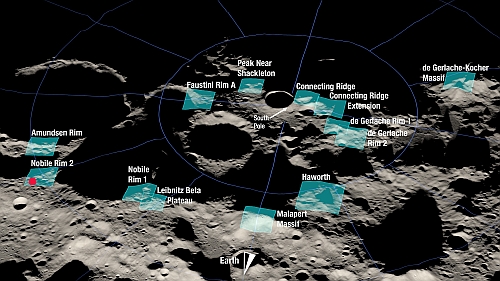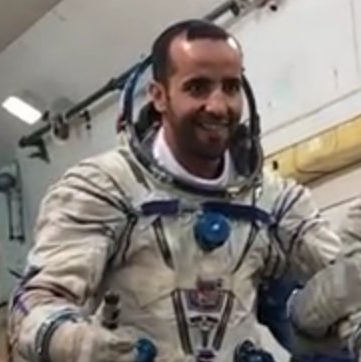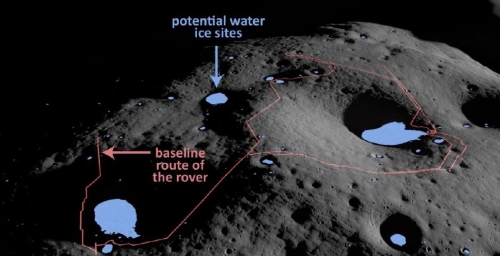NASA lists 13 candidate landing sites for Artemis-3 manned mission
NASA yesterday revealed its first preliminary list of thirteen candidate landing sites for the Artemis-3 manned mission, the first manned mission the agency wants to send to the Moon in 2026.
The image to the right, reduced, enhanced, and annotated by me to post here, shows these thirteen zones in blue. I have added the red dot to mark what I understand to be the planned landing zone of Viper, an unmanned rover that NASA hopes to launch by ’23 at the latest. From the press release:
The team identified regions that can fulfill the moonwalk objective by ensuring proximity to permanently shadowed regions, and also factored in other lighting conditions. All 13 regions contain sites that provide continuous access to sunlight throughout a 6.5-day period – the planned duration of the Artemis III surface mission. Access to sunlight is critical for a long-term stay at the Moon because it provides a power source and minimizes temperature variations.
Note that this mission will land a Starship with crew at this South Pole region. That spacecraft’s large payload capacity likely means that it could conceivably leave behind supplementary supplies for a follow-up next mission, and thus speed up development of the first lunar base.
NASA yesterday revealed its first preliminary list of thirteen candidate landing sites for the Artemis-3 manned mission, the first manned mission the agency wants to send to the Moon in 2026.
The image to the right, reduced, enhanced, and annotated by me to post here, shows these thirteen zones in blue. I have added the red dot to mark what I understand to be the planned landing zone of Viper, an unmanned rover that NASA hopes to launch by ’23 at the latest. From the press release:
The team identified regions that can fulfill the moonwalk objective by ensuring proximity to permanently shadowed regions, and also factored in other lighting conditions. All 13 regions contain sites that provide continuous access to sunlight throughout a 6.5-day period – the planned duration of the Artemis III surface mission. Access to sunlight is critical for a long-term stay at the Moon because it provides a power source and minimizes temperature variations.
Note that this mission will land a Starship with crew at this South Pole region. That spacecraft’s large payload capacity likely means that it could conceivably leave behind supplementary supplies for a follow-up next mission, and thus speed up development of the first lunar base.






